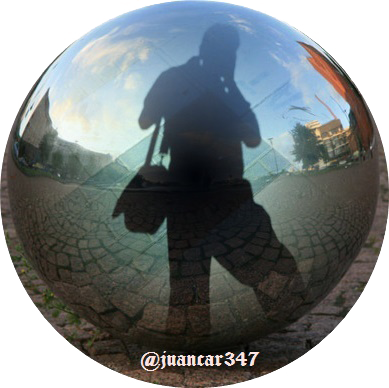Art and Symbolism: the Christ in the Cross by Van Eyck
It owns the Thyssen-Bornemisza Museum of Madrid, a remarkable collection of Art, of all times and styles, that although it can not be compared with the magnificent treasures that are guarded in the nearby and nearby Prado Museum, it deserves a very special attention, because also, although at a lower level, it exhibits certainly interesting works of known and recognized Masters, not exempt, in any case, of interest, mystery and beauty. In fact, some of the paintings contain such an amount of enigmas and archetypes, that they would keep their whole lives occupied in solving them to that inflexible detective who, working his way through the turbulent imagination of Sir Arthur Conan Doyle, presented himself and marveled at the underworld the name of Sherlock Holmes. Following the guidelines of patience and observation, let us imitate for a moment our good Sherlock and placing ourselves comfortably in front of this singular oil on panel, made by that extraordinary flamenco teacher who was Anton van Dick (born in Antwerp, in 1599 and died in London, in 1641), let's try to review some interesting details.

In appearance, his Christ on the Cross does not differ much from the dozens, hundreds or thousands of paintings or sculptures that show this special scene of Christian dogma, such as that of the Sacrifice or the Crucifixion. Now, if we look a little, we will observe that, after all, nothing is what it seems; or better yet: beyond the first impression of the whole, we may start to assault a sudden shock, if as we deepen our observation, we are placing certain details, if not significant in appearance, if at least interesting and worthy of speculation . Let's start with the wood. It is a rough model, possibly representative of what could really be the wood used for this type of execution. In that sense, without polishing and symbolically speaking, it could remind us of the raw material of Alchemy, the first natural state for the execution of the Great Work. But in addition, by the position of the arms, it could be suggested that van Eyck, at first, had intended to base his Crucifixion on those earlier models -teenth century-, known as Rhenish Christs or painful Christs, represented the wood with the shape of a goosefoot or rune of life, models that, curiously, at least two are known in Spain and both, no less curiously speaking, located at two strategic points of the Camino de Santiago: Puente la Reina and Carrión of the Counts.

The phylactery, the one that traditionally should contain the INRI epigram -Isaus Nazarenus Rex Ioudourom or if you prefer a more alchemical and esoteric interpretation, Integra Natura Renovatur Ignis-, is completely blank, perhaps as, if intentionally, van Eyck would suggest that after of everything, everyone and forgiveness for the redundancy, we are Christ and that each one of us must carry our Cross and write our own Epitaph. The nails, also play with the theories of how the Crucifixion was actually produced, although it is scientifically accepted that they could not cross the palms, because this would mean a terrible tear and the impossible subject's subjection. By the way the Master placed them, anyone would say that they had privileged information. And here comes, perhaps the most determinant of the subject, because if we look at the left hand, we will see that it forms the international symbol of 'the horns', although in this case not so much applied to conjugal betrayal, as referring to another character, with which sometimes they have also painted the shadow of Christ and that has brought Christians to the head since the dawn of time: the devil.

In this regard and as a climax, it may be interesting to reflect here the assertion of Clement, bishop of Rome in the first century, who thought that God ruled the world with the right hand, which was Christ, and with the left, which was Satan (one). And to finish, perhaps throwing a little pepper to the subject, the pinky and ring fingers point towards the sky, in a clear gesture that we all know.

Bibliography:
Sally Nichols: 'Jung and the Tarot. An archetypal trip ', Editorial Kairós, S.A., 1st edition, Barcelona, March 1999.
NOTICE: Both the text and the photographs that accompany it are my exclusive intellectual property. The reference frame belongs to the Collection of the Thyssen-Bornemisza Museum in Madrid.
Te invito a conocer el mundo del que estoy enamorado.
Image © juancar347. All Rights Reserved.
Original content by @juancar347
Discord
juancar347#4046


[Martial, latin poet]
Ars vtinam more
Animvm qve effingere.
Posses pulchrior in ter.
Ris nvlla tabella foret.
Arte
Ojala pudieras representar.
el carácter y el espíritu.
No habría sobre la tierra.
Imagen más bella
.jpg)


[Martial, latin poet]
Another fascinating art subject and article!
Thanks, friend